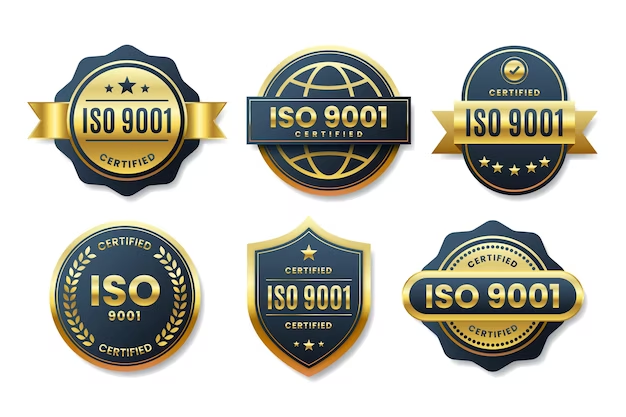
The 5S approach, commonly referred to as the 5S principle, is an effective tool for companies looking to increase their production and efficiency while retaining their ISO 9001 certification. Sort, Set in Order, Shine, Standardise, and Sustain are all represented by the abbreviation 5S. This approach was initially created in Japan and has become prevalent across various global industries, including manufacturing.
Sort
To comply with ISO 9001 regulations, the first stage in the 5S process is to go through every item in the work area and determine what is necessary and what is not. This entails clearing out extraneous materials and arranging simple things to find and utilise. Businesses can employ this to increase operational effectiveness and decrease the time and effort needed to execute activities.
Set
The next stage is to arrange all relevant goods such that they are simple to find and utilise. This entails tagging products, designing specific storage spaces, and implementing an inventory management system. Businesses can lessen the possibility of losing crucial products or papers, which could result in expensive mistakes and delays.
Shine
The third stage is to clean and maintain the workspace, which includes routinely cleaning and maintaining all the tools and equipment. This is necessary to keep the ISO 9001 certification. This action is crucial for preserving a secure and healthy work environment and guaranteeing the machinery is functioning well. By doing this, businesses can lower the chance of mishaps, injuries, and equipment failures.
Standardise
The fourth phase is establishing standard operating procedures for maintaining the workspace, such as regular upkeep and cleaning schedules and instructions for correctly utilising and caring for tools and equipment. This stage is essential for fulfilling ISO 9001 requirements and guaranteeing that organisations maintain constant quality and adherence to legal obligations.
Sustain
Making sure that the 5S principles are upheld over time is the last phase. This includes educating new hires on the 5S system and routinely reviewing and upgrading procedures. Businesses can continue to enhance their productivity and efficiency over time by doing this and maintaining their ISO 9001 accreditation.
Any firm striving to keep its ISO 9001 certification can benefit greatly from applying the 5S principle. Increased production, enhanced safety, fewer accidents, greater quality, and cheaper costs are a few of these advantages. Companies can improve their working environments and contribute to reducing the wastage of time, effort, and resources by using the 5S methodology, which is essential for satisfying ISO 9001 requirements.
The 5S process applies to any industry and workplace, including offices, retail establishments, and manufacturing facilities. It is a straightforward yet efficient approach for enhancing the cleanliness and structure of a workspace.
This process may significantly affect a company’s productivity and efficiency. Businesses can improve their overall operations, keep their ISO 9001 certification, and boost their competitiveness and profitability by implementing the 5S principle.
The 5S principle is a potent tool for increasing efficiency, security, and quality; these are essential for retaining ISO 9001 certification and organising and keeping a workspace clean. Any organisation can enhance its working environment, reduce wasted effort and money, and constantly adhere to regulatory standards by following the five steps.
Featured Image Source : https://img.freepik.com/free-vector/iso-certification-badge-collection_52683-47829.jpg?size=626&ext=jpg&ga=GA1.2.1173742830.1671113603&semt=ais



